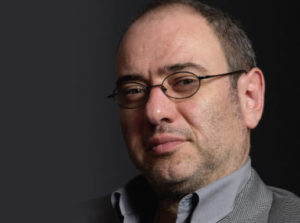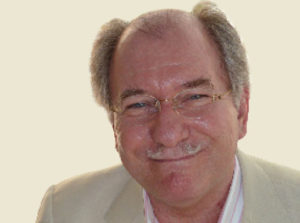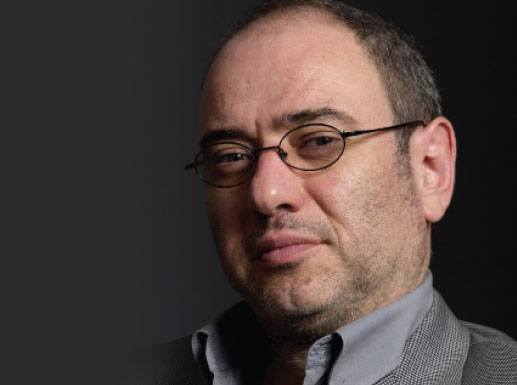So, how do we rebuild a crisis-hit destination? Raini Hamdi asks brand and communications experts.
Typhoon Haiyan robs the Philippines of its Fun. Thailand’s anti-government ‘shutdown’ gives Amazing a different meaning. Serial rapes render Incredible India impotent.
As any branding or communications guru will tell you, all it takes is a crisis to annihilate a destination’s image. As Asia evolves economically, socially and politically, and as natural disasters become a staple diet, more crises can be expected.
So, what’s an affected destination to do? Should it replace its branding? When arrivals are down due to an ‘unsafe’ label and travel advisories, can branding and advertising bring back the numbers? Are daily updates designed to give clients ‘the facts’ effective, or do they go straight into spam or, worse, serve only to remind clients of a crisis?

Turning negative into positive
When the 2004 Asian tsunami hit Thailand, Patrick Gauvain, founder and managing director of Bangkok’s oldest design and communications agency, Shrimp Asia, had just launched for the JW Marriott, Bangkok a new Japanese restaurant which his agency branded as –Tsunami.
“Marriott called a crisis meeting and wanted to change the name (it had just spent three million baht, or US$91,352, on a promotional campaign) and I suggested not to do this, but to turn a negative into a positive.
The Tsunami restaurant then announced that a percentage of its revenue would be donated towards the Tsunami Relief Fund. It raised quite a lot of money, and more brand awareness from its good deed,” Gauvain recalled.
“Something similar could be done with the Philippines. For example, Fly to the Philippines with Philippine Airlines (PAL) and 10 per cent of your airfare will go towards Haiyan. The destination could amend its ads/commercials and even make a PR/online campaign out of it. PAL is government-owned anyway, so it should help support the cause and encourage the private and domestic airlines to do the same.”
When a disaster hits, the last thing a destination wants to do is do nothing, said branding experts, consultants and communicators.
“All brands are fragile, none more so than countries or destinations in crisis. Most destinations react with silence and in each case, they do irreparable damage to their brand, said Quo Global’s CEO, David Keen.
There is much to be done; indeed, crises are “opportunities for destinations to invigorate their perception”, he said (see box below).
Bill Barnett, managing director of C9 Hotelworks, points to India as an example of a brand that has “gone into hibernation”.
“India has not done anything to address the rape issue, which has stunted tourism growth. Zero. The past few years Incredible India was one of the
best tourism campaigns anywhere, but it has lost the plot and gone into hibernation,” said Barnett.
But even if they are not silent, few countries actually get it right in rebuilding the destination. The reasons run the gamut: bureaucrats running tourism making a corporate decision on a crisis management branding or situational awareness; changes in manpower in bureaucracies; lack of alignment between public and private sectors; absence of a single tourism agenda and single voice; private sector players’ apathy and bottomline first priority; lack of budget or budget foolishly spent; appointments of agencies that are not based on merit but corruption and cronyism – in some parts of Asia where these are rampant, this interlinked, complex ecosystem that enables effective branding and communications can be nothing short of dysfunctional.

‘Not in the thick of things’
Asked to rate how Thailand and the Philippines have managed their respective crises (at press time in late January), Barnett said: “So far, they have not been in the thick of things. In either case, what we’re missing are tourism or hotel brands in leadership roles. Barnett pointed to Bali and the Bali Hotel Association as a good example of leadership over the years when terrorism struck the island. “There was clarity as there’s a large organisation speaking for tourism. This is key. In so many other cases, tourism ranks far below other sectors and what comes out are political statements.”
Ken Scott, managing director, ScottAsia Communications, agreed. “The Philippine authorities were slow off the mark. The impact of Haiyan was beyond what they were prepared for – politically, physically, and psychologically.
“Thailand’s political situation has been an on-off issue over the last eight years, more a condition than a crisis. But at the moment things are veering towards crisis and the tourism authorities should have their crisis scenario preparations made,” he said.
Shrimp Asia’s Gauvain said TAT’s situational updates on the anti-government protests “are trying to justify the situation, not put out the fire”.
“They (TAT) should downplay the protestors. They should be using Facebook, Instagram, Line; create competitions where participants can win awards like a weekend in Phuket, free flights and meals, etc, sponsored by the private sector. When someone ‘Likes’ something on these apps, they disseminate that information to their friends – the tourist takes ownership of the brand and becomes your ambassador,” said Gauvain.
Scott however thought TAT’s updates were “good”, “frequent” and “information rich”, although he too noted they should be more prominent on the home pages of tatnews.org, tourismthailand.org and na.tourismthailand.org.
He acknowledged the now-standard reaction by NTOs and DMCs to send out regular updates when a disaster strikes could be counter-effective by drawing attention to a negative, but “on the principle of one step back two steps forward, it has to be done”.
“Stakeholders are intelligent people. They appreciate being informed so they don’t unwittingly put their clients into harm’s way due to ignorance,” said Scott.

Stimulating a rebound
A crucial aspect of disaster recovery is stimulating a rebound, especially when recovery these days tends to be “quicker”, according to Barnett, who traced crisis-hit Asian destinations in recent history and noted a three- to six-month recovery timeframe.
“Unfortunately the first business to go is longhaul corporate and MICE, which is high-yielding, so you can’t replace long lead time business. You have to simply fill the rooms on ad hoc strategies and what hurts the most is room rates. Thankfully with the LCCs it’s much easier to turn on the tap,” he said.
However, LCCs, while fuelling travel among Asians, also open up a multitude of destination choices for them. This is why there needs to be “a real promotion by the private sector, with the support of the NTO, to entice them back, said Gauvain.
“For the Asian market it’s psychosomatic. Give a Chinese mainlander a discount opportunity and they will be there like a shot,” he said.
UK clients would too, said David Kevan, director, Chic Locations UK, offering a tour operator perspective on whether advertising/promotion works in a crisis. “At the risk of sounding callous and cynical, it is now accepted that many clients in the UK, and probably in most other countries, can be opportunistic hyenas. So today’s disaster area can be tomorrow’s holiday bargain. In many cases, there could be clients who feel by returning quickly to a destination theyare benefiting the local economy. But it is the thought of a reduced price and a holiday bargain that is the main stimulation,” he said.
“With the right offer – usually significantly reduced rates, free nights, etc – a destination can start to see tourists returning quicker than anticipated.
“This particularly applies in a destination that was enjoying good popularity and then was impacted by political or natural events. It is much more difficult to rebuild a destination that was in decline anyway as, even at rock bottom prices, it is unlikely you can stimulate demand.”
Turning brand crisis into opportunity

Crises are “opportunities for destinations to invigorate their perception”, said Quo Global’s CEO, David Keen.
“Should the Philippines stop marketing the destination in light of (Haiyan)? No, it should never stop marketing the country but it has to evolve the current perception because it does not talk to future investors and belittles the country’s image when there’s a natural disaster.
“The government should align itself far more closely with the vibrant private sector and evolve the perception of the country accordingly,” he said.
Keen’s point is It’s More Fun in the Philippines is “myopic” to begin with.
“One can reasonably argue that any beguiling tagline may be rendered ineffective after a natural catastrophe, but surely a tagline that talks to the credibility, opportunity, personality and particularly, in the Philippines’ case, investment, would be taken more seriously and would bring significant long-term benefit to the country?
“Today Palawan is gearing up to position itself as the next Bali, Phuket or Samui. The entrepreneurial governor has taken the view that Palawan needs to form a powerful independent brand to attract foreign investment. The new brand is intended to draw on the magnificent beauty of the province and the natural attraction of the people in the province to create desire from the biggest tourism players in the industry. Does It’s More Fun in the Philippines talk to that aim?
This article was first published in TTG Asia, February 21, 2014 on page 5. To read more, please view our digital edition or click here to subscribe.




















